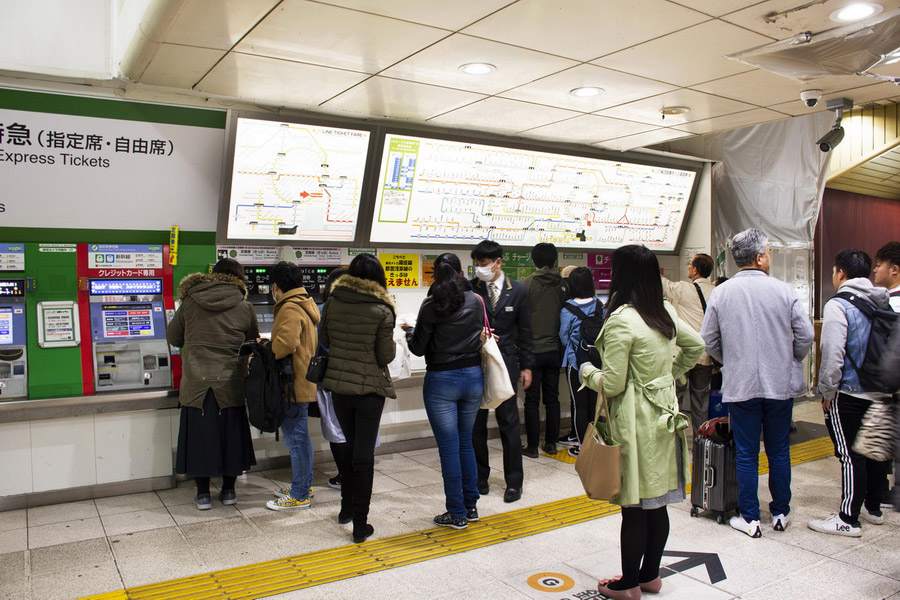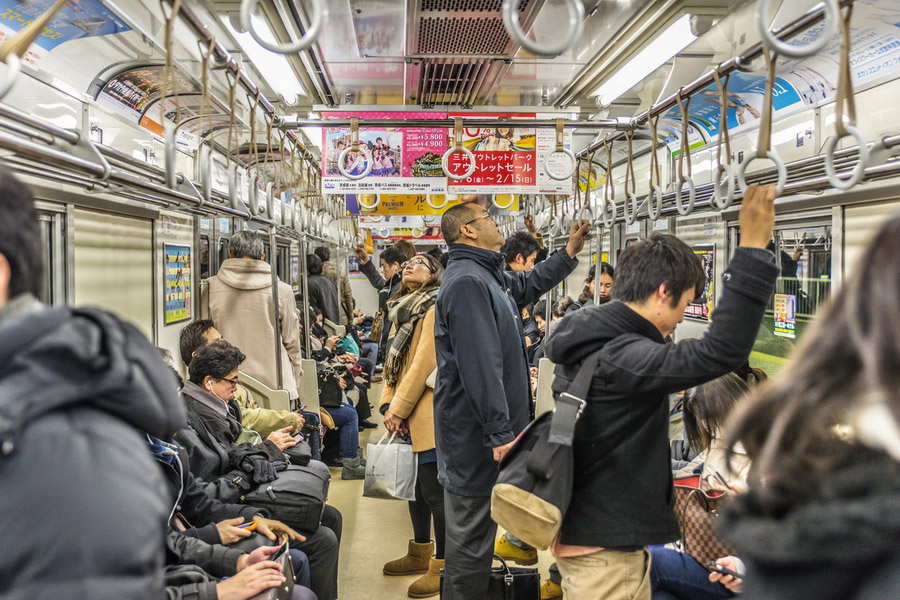
The Tokyo metro is one of the most advanced and efficient transit systems in the world. Known for its extensive network, it often experiences heavy congestion during rush hour. It’s both affordable and safe, standing as a symbol of Tokyo's rapid growth. The metro provides convenient access to iconic landmarks such as the Tokyo National Museum, Meiji Shrine, and Hama Rikyu Gardens, with stations located near most museums, hotels, and shopping centers.
History
In 1914, Japanese entrepreneur Hayakawa Noritsugu returned from England, inspired by the London Underground and Glasgow Subway. He envisioned a similar system for Japan and began construction six years later. In 1927, Tokyo’s first subway line was opened. Noritsugu’s investment in the metro’s design secured his legacy in Japan’s modern history. In 1934, a line was established from the popular shopping district of Ginza to Shimbashi. After World War II, metro construction accelerated, leading to the development of major lines like Hibiya, Tozai, Yurakucho, Hanzomon, and Chiyoda in the 1960s. Additional sections on the Yurakucho and Namboku lines were completed in the 1980s and 1990s, with the Fukutoshin line opening in 2008. The most recent addition, the Shinjuku Line, opened on December 15, 2020, connecting the Shinkyuku District with other parts of Tokyo and enhancing the city's infrastructure.
Structure

A unique feature of the Tokyo Metro is its combination of private and public regulation. The private Tokyo Metro company operates nine lines, while the Tokyo government, through Toei Subway, owns four lines. Each line is identified by a specific color, name, and number. Despite having two separate networks, the systems are not fully integrated, which necessitates the use of turnstiles at transfer points. However, payment is simplified with Pasmo or Suica cards, which work across both networks.
The subway operates daily from 5:00 am to 1:30 am, with peak hours around 7:00 - 9:00 am and 5:30 - 8:00 pm. Though there are limited night buses and shuttles, subway service is extended on weekends and holidays. Trains run at two-minute intervals, a record held for many years until the Moscow Metro reduced its waiting time to 80 seconds in 2023. In the Tokyo metro, it’s customary to walk on the right side of escalators and stand on the left; reminders of this are posted throughout the system.
Every station is equipped with vending machines, mini kiosks, mirrors, benches, drinking fountains, restrooms, and paid luggage lockers (which range from three to six dollars per day and are particularly popular). Additionally, free Wi-Fi is available throughout the metro, accessible through the Japan Connected-free Wi-Fi app.
Prices

One of the distinctive features of the Tokyo metro is its variable fare system, which adjusts based on the distance traveled. The starting fare in Tokyo begins at 175 yen. To make things easier for international visitors, a comprehensive list of stations with corresponding fares from your current location is displayed at the ticket office. You can purchase tickets for one or more adults, children, or seniors directly from the machines, with payment options including card, cash, and even facial or fingerprint recognition.
If you’re planning to stay in Tokyo for more than three days, it’s more economical to get an IC Pasmo or Suica e-ticket. These cards simplify transfers between different transportation systems, saving both time and money, with fare differences as small as 5 yen per trip. Remember to keep your ticket throughout your journey, as it will be checked when transferring lines or exiting the subway.
For the Suica card, a minimum deposit of around 450 yen is required, which is refundable if you return the card at the end of your trip. The Suica card is valid on the JR East network in and around Tokyo, all Tokyo Metro lines, and even buses and monorails connecting Haneda Airport to the city center. Beyond Tokyo, Suica can also be used in some transport networks across Hokkaido, Sendai, Niigata, Tokai, West Japan, and Kyushu. Another benefit is that it’s accepted at select grocery stores, theaters, and kiosks.
Navigation
The Tokyo metro is the fourth largest in the world, so expansive it’s often referred to as a "second Tokyo." At first glance, the map might seem overwhelming with its many unfamiliar characters, but it’s actually quite user-friendly, with all necessary information available in English as well. Color-coded maps and guides are accessible near station ticket offices, on platforms, at airports, in hotels, and even through mobile apps for travelers. Throughout the subway and other modes of transport, you can track your journey on interactive electronic monitors above each door. These displays provide information on travel time, transfer options, elevators, exits, and escalators in both Japanese and English, with announcements to match. Additionally, Tokyo residents and metro staff are always ready to assist with any questions.
Cars

Tokyo subway cars are designed with maximum comfort and efficiency in mind, typically consisting of 10-12 cars per train. During peak hours, there are separate cars designated for female passengers. All cars feature heated seats, with special seating areas for pregnant women, children, and people with disabilities. The train windows are UV-protected, often equipped with blinds. Above the seats, you’ll find storage compartments for hand luggage.
Considering Tokyo’s subtropical climate and high energy costs, the subway administration decided to forgo air conditioning in the stations and passages. Instead, they use an innovative cooling system: workers freeze containers of water during off-hours, which are then sprayed as fine ice particles throughout the stations the next day, keeping passengers cool.
Etiquette
The Tokyo metro has its own set of unwritten rules that everyone is expected to follow. Just like in other subways, it’s important to stand aside at the train doors, allowing exiting passengers to get off before you enter the carriage. Eating, placing luggage on the seat next to you, taking more than one seat when you’re alone, using electronic devices loudly, and speaking in a loud voice are all frowned upon—talking loudly may even earn you a polite reprimand.
Safety
Passenger safety is a top priority in Japan. The Tokyo metro's multi-level security system relies on thorough monitoring by law enforcement and extensive surveillance cameras along the tracks. Announcements over loudspeakers remind passengers to stay away from the platform edge, while notifications of arriving and departing trains are regularly broadcast. A distinctive tune plays just before the train doors close. And even more, the trains themselves issue warnings about sharp curves ahead, the possibility of sudden stops, and on rainy days, reminders not to forget umbrellas, which can be stored in special compartments inside the cars.
Another thoughtful safety feature is the platform step-out with guardrails that block access to dangerous areas as trains approach.
The Tokyo metro is more than just a transportation system; it’s an urban marvel and an iconic part of the city. With its attention to detail and high level of organization, you can sit back, relax, and fully enjoy your ride!

